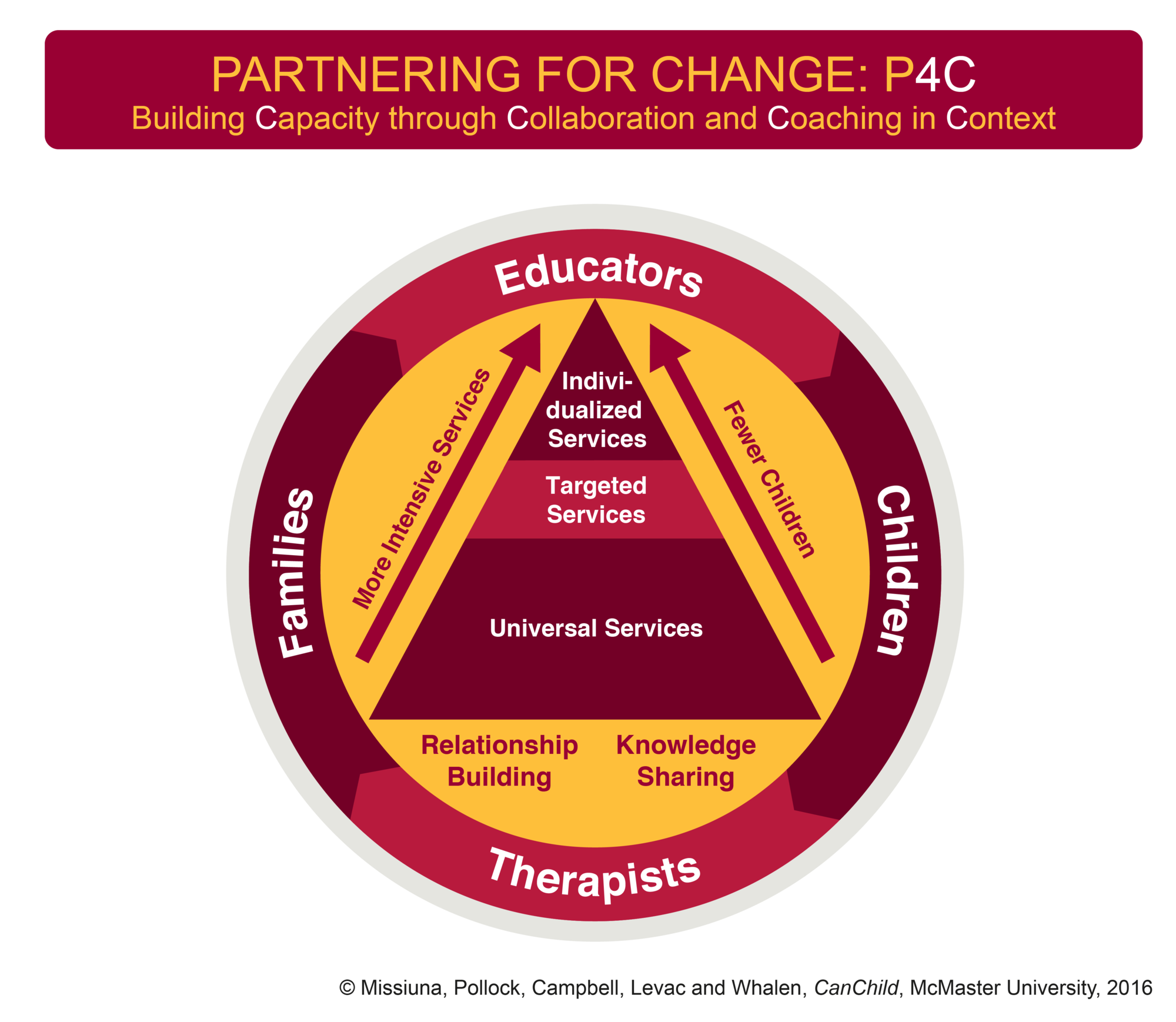Partnering for Change Model

This is the current iteration of the Partnering for Change (P4C) Model. Although some of the terminology has changed over time as our thinking and the evidence has evolved, the underlying concepts and principles have remained the same.
The principles of P4C are the four Cs: Building Capacity through Collaboration and Coaching in the school Context.
- Partnering: emphasis on relationship building, knowledge sharing, and partnership between the occupational therapist, educator, child, and family.
- Capacity Building: educators and families are supported, through a collaborative approach, in learning to recognize children who are struggling to participate and/or access the curriculum so that strategies can be introduced right away, without the need for formal assessment, to prevent the development of secondary consequences.
- Collaboration and Coaching: occupational therapists are in the school regularly to coach and support educators directly in the classroom; coaching builds on the existing skills and knowledge of educators and families and leads to collaborative determination of solutions.
- In Context: children are served in context, be it in the classroom, playground, gym, or at lockers; dynamic assessment and observation occur where the child is and strategies are trialed at the time to make sure they meet the child’s needs.
The P4C tiered model considers the needs of the child, educator, and family when determining the services that are required. As shown in the figure, the model reflects the partnership between therapists, families, and educators to create physical, social, and learning environments that facilitate successful engagement and participation for all children. Working from a foundation that focuses on relationship building and sharing of knowledge, these partners collaboratively implement universal services that foster development in children of all abilities. Occupational therapists also provide targeted services for children who are experiencing challenges, even when universal strategies or environmental modifications have been put in place. Monitoring the response to these targeted interventions allows therapists and educators to determine when children need individualized strategies and accommodations to participate in a different way and when more tailored services would best support children and their families. For children who are already known to need targeted or individualized services, services may be initiated at those tiers. However, even then, occupational therapists consider how targeted and individualized strategies might be applied universally for all children. Throughout, the school remains the focus of services, allowing therapists to impact the greatest numbers of children. Therapists monitor each change and adjust the intensity of the services that they provide as they collaborate with educators and families. In this model, collaboration and service delivery occur in the classroom and other important school environments so that the children can apply new skills where they are needed.
